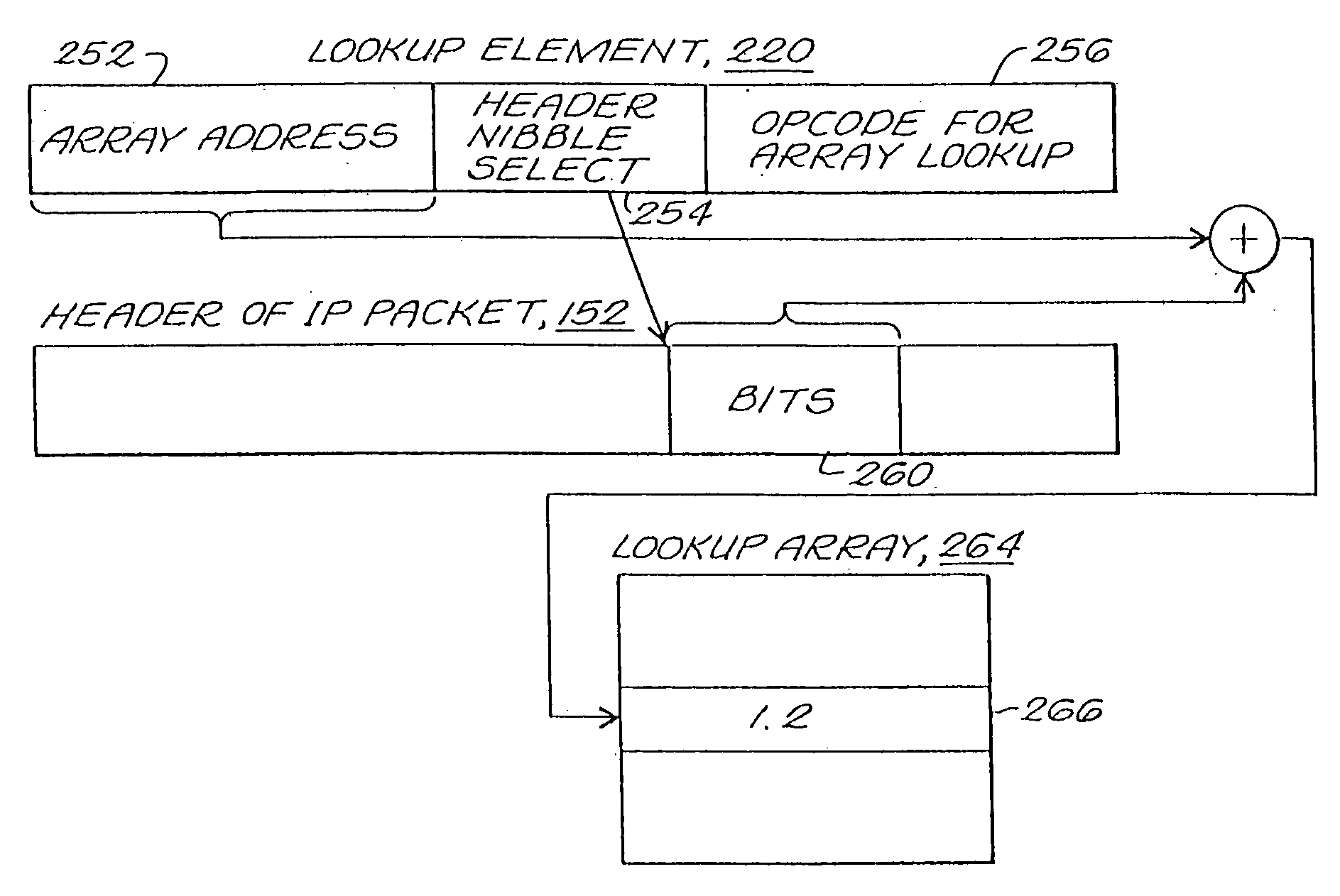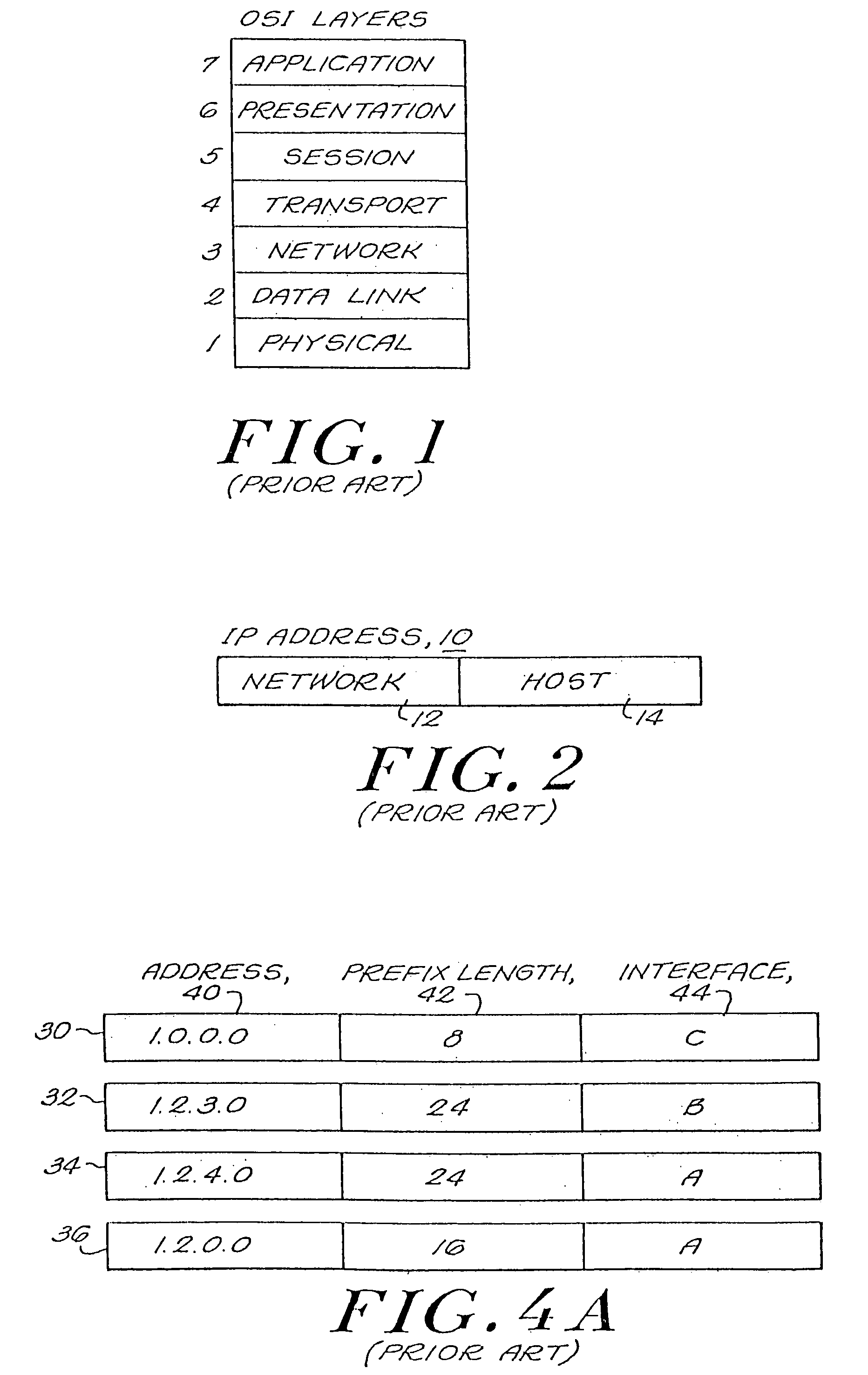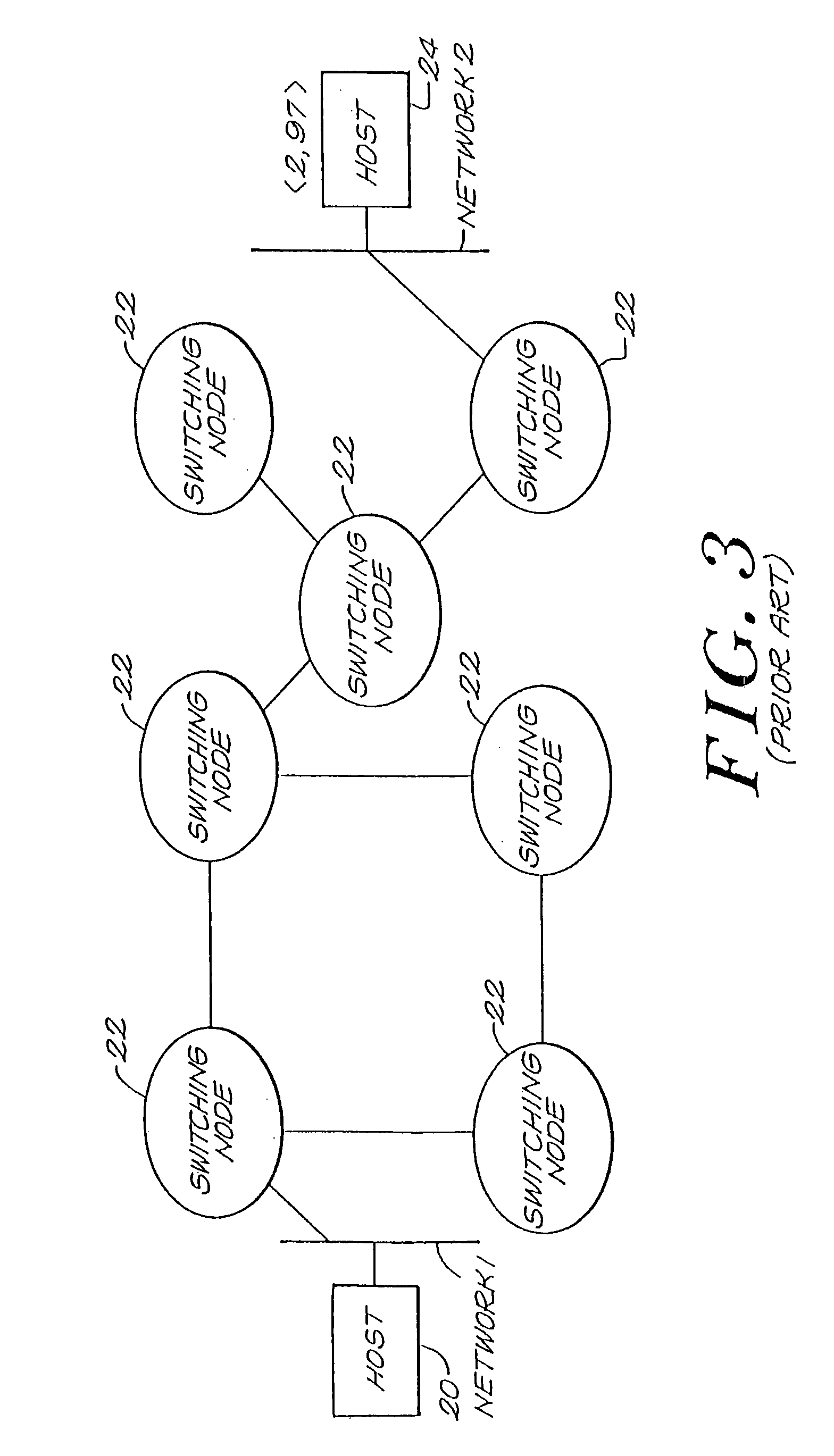Network packet forwarding lookup with a reduced number of memory accesses
a network packet forwarding and memory access technology, applied in the field of switches and routers, can solve the problems of increasing the number of memory accesses, increasing the computational overhead of memory accesses, and many parties objecting to this rigid bit allocation between, so as to reduce the computational overhead and the time required
- Summary
- Abstract
- Description
- Claims
- Application Information
AI Technical Summary
Benefits of technology
Problems solved by technology
Method used
Image
Examples
Embodiment Construction
[0046]The illustrative embodiment of the present invention provides a switch / router that forwards network layer packets toward their destination with fewer memory accesses on average during network layer forwarding lookup than conventional switching nodes. “Network layer packet” refers to a packet that complies with an OSI layer 3 protocol. Although the illustrative embodiment of the present invention will be described below for use with IP packets, the present invention may also be used for different types of network address lookup, such as with CLNP and other protocols. The switch / router employs a first forwarding lookup that may be indexed by the leading sixteen bits of the destination address for an IP packet. A second forwarding lookup is also provided within the switch / router. The second forwarding lookup may be indexed by the next successive eight bits in the destination address that follows the first sixteen bits. Lastly, a third forwarding lookup is provided in the switch / r...
PUM
 Login to View More
Login to View More Abstract
Description
Claims
Application Information
 Login to View More
Login to View More - R&D
- Intellectual Property
- Life Sciences
- Materials
- Tech Scout
- Unparalleled Data Quality
- Higher Quality Content
- 60% Fewer Hallucinations
Browse by: Latest US Patents, China's latest patents, Technical Efficacy Thesaurus, Application Domain, Technology Topic, Popular Technical Reports.
© 2025 PatSnap. All rights reserved.Legal|Privacy policy|Modern Slavery Act Transparency Statement|Sitemap|About US| Contact US: help@patsnap.com



